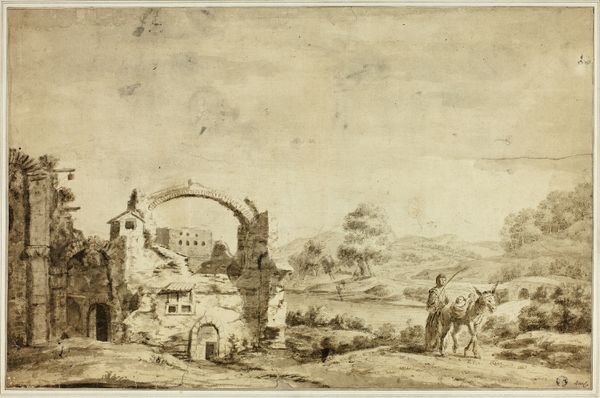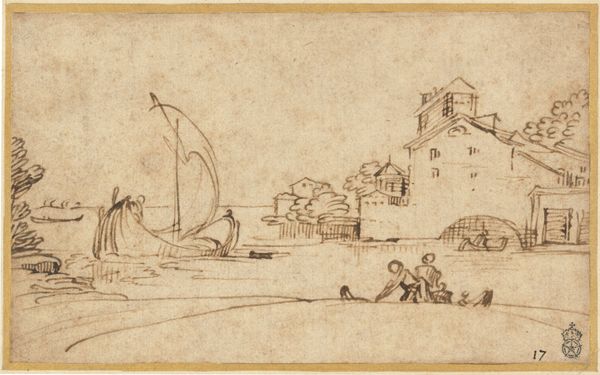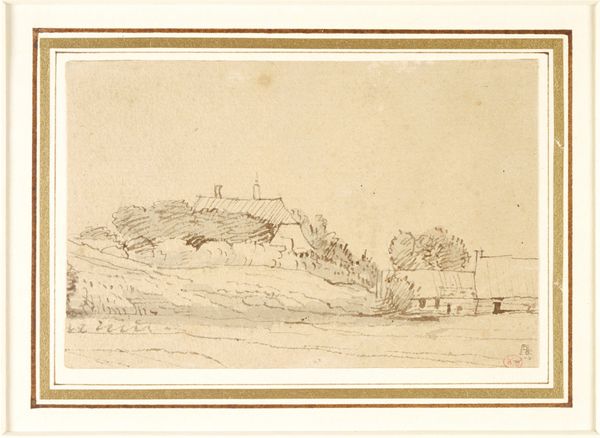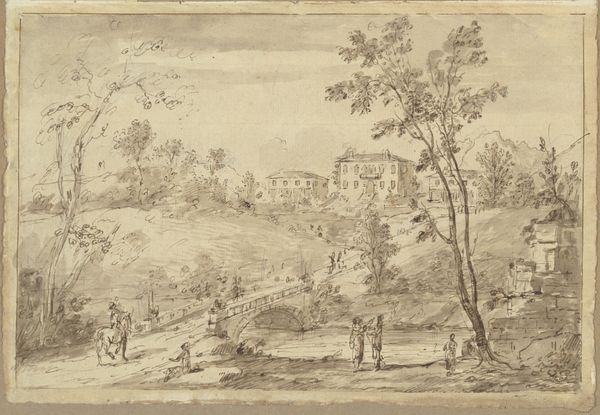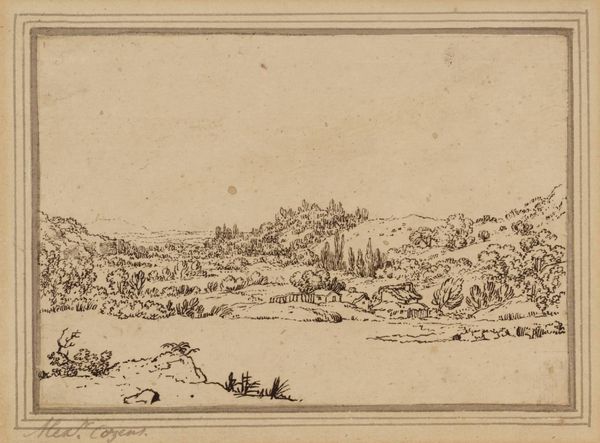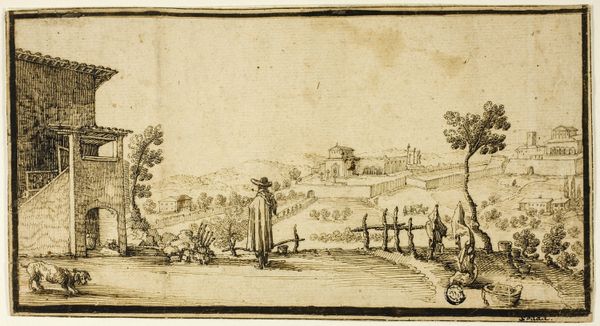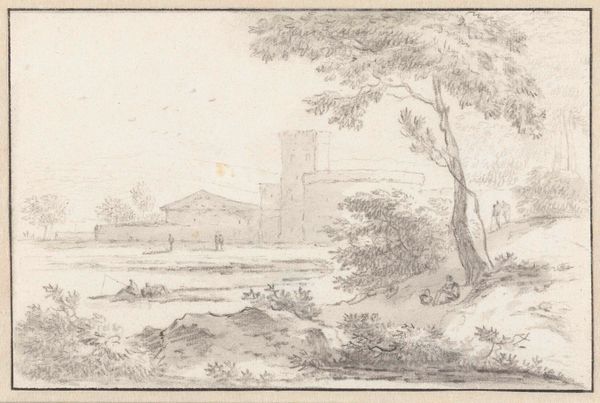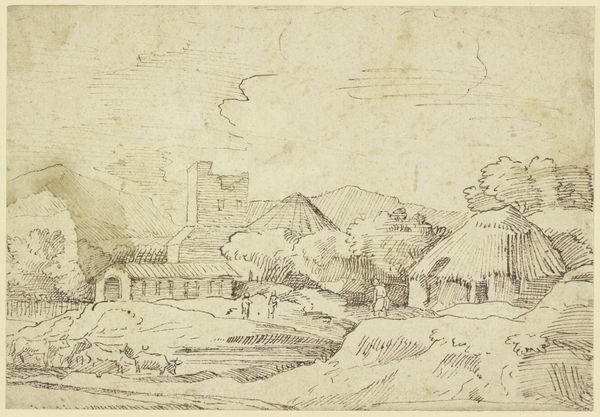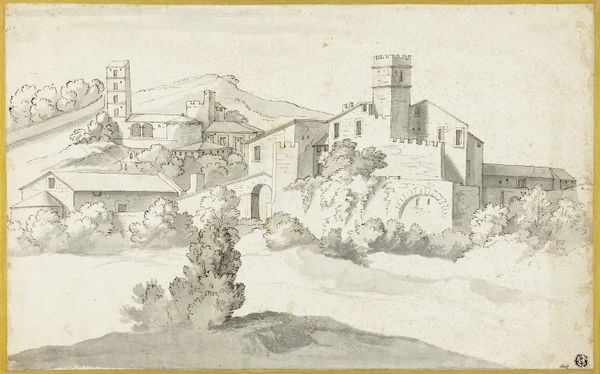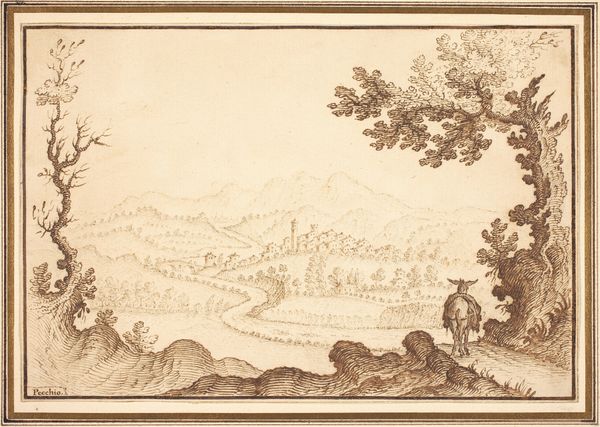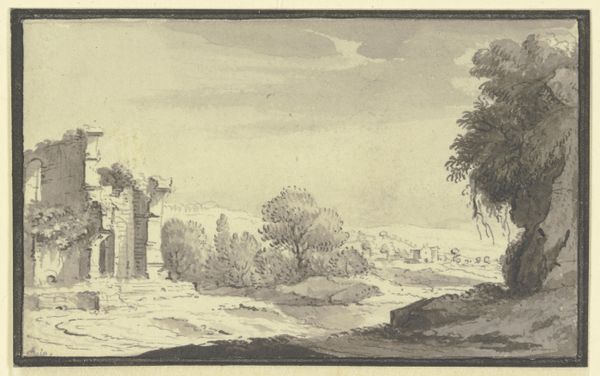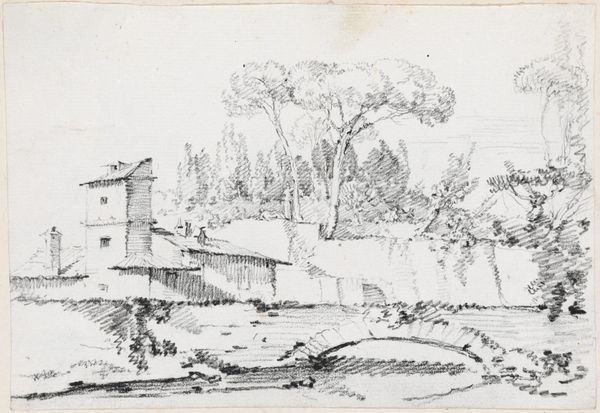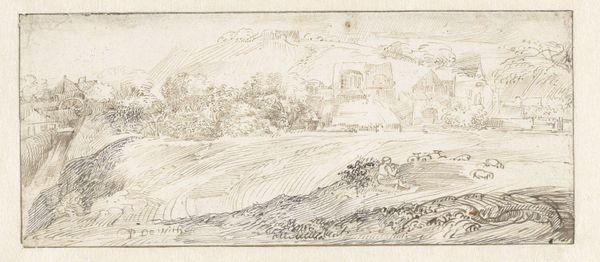
drawing, ink
#
drawing
#
baroque
#
landscape
#
ink
#
coloured pencil
#
history-painting
Copyright: Public Domain
Curator: The energy is incredible; even within this static drawing there is implied movement—chaos, even. I find it both fascinating and, truth be told, unsettling. Editor: Yes, the frenetic quality is immediately apparent. This is "Landscape with Stag Hunt," an ink drawing attributed to Jacques Callot currently held here at the Städel Museum. The materials themselves are rather simple: ink on paper. Curator: Yet the effect is hardly simple. I'm struck by how the scene echoes very ancient ideas of hunting—an almost primal need that then becomes associated with wealth, status, and ritualized behavior. You see that even now, that combination of practical skill and social performance. Editor: The texture of the paper itself contributes so much; you see the subtle variations in the ink, revealing not only Callot's skilled hand but the absorbent qualities inherent in the paper he selected. It's important to recognize this image was conceived as a tool. Curator: As a tool? Explain what you mean. Editor: Callot used printmaking as a reproductive, accessible medium. These landscapes acted almost like prototypes: conveying symbols and cultural ideals. Curator: So what is being said then? There's such an assertive performance of dominance—the hunters, the dogs—that's clearly being conveyed to those encountering this imagery. It speaks to who possesses power within this realm and time. Editor: Power certainly but maybe also something else. Given the way landscapes function historically— as demonstrations of possession and even nascent property rights—it feels deeply ingrained into its value as an object, what Callot's print work offered to that paradigm. Curator: Thank you, I find myself pondering how those historical perspectives play out in our own present. It provides such clarity in looking at current issues, what's old becoming new in infinite ways. Editor: Absolutely. I’m increasingly captivated by the connection this type of artwork creates—not just within its original moment, but even now, as a document to inspire reflection upon the world around us.
Comments
No comments
Be the first to comment and join the conversation on the ultimate creative platform.
